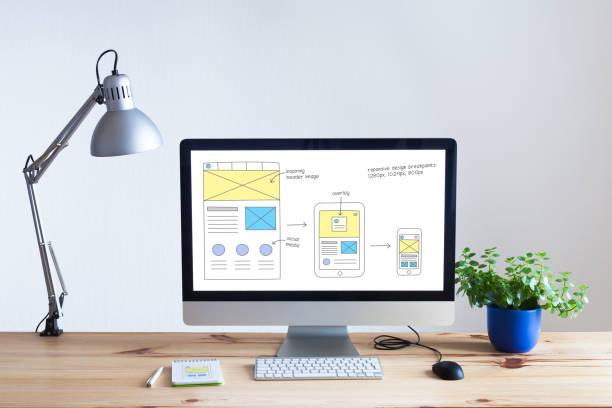These days state of digital publishing, businesses, and creators have countless options for sharing online content in dynamic, engaging formats. By leveraging a digital publishing platform that allows seamless integration of multimedia, customization, and audience targeting, you can transform how you publish content.
For both print and digital needs, these platforms serve as an all-in-one publishing solution, enabling creators to effectively reach readers wherever they are. Whether you’re a publishing company or an independent creator, the right digital publishing solution can enhance your reach and impact.
Many platforms also combine digital asset management to store and organize media files, making it easy to manage content for multi-channel distribution. Wondering how to make the most of these tools? Explore these 15 ways to use a digital publishing platform to create online publications and elevate your content strategy. Read on to discover innovative ways to use these powerful tools!
What is a Digital Publishing Platform?
A digital publishing platform is a tool that allows creators and businesses to create and publish content online, catering to the growing demand for consuming digital content. Unlike traditional publishing methods, these platforms enable users to reach audiences across all digital channels, such as websites, social media, and mobile apps. In the world of digital publishing, these platforms make it easier to produce, manage, and distribute various types of content—from digital catalogs and magazines to blogs and multimedia publications—enhancing visibility and engagement with readers.
In addition to content creation, digital publishing platforms often combine digital asset management together with content publishing. This feature allows users to store, organize, and access media assets like images, videos, and documents in one place, streamlining the entire publishing workflow. Platforms like Issuu, FlippingBook, and Adobe InDesign are examples of popular digital tools used in the digital publishing industry for their ability to handle complex projects with ease.
A publishing platform that lets you integrate multimedia, track audience engagement, and customize layouts is essential for meeting the needs of digital publishers. By choosing to use this digital publishing platform, companies can effectively adapt to the changing landscape of online media and offer a more interactive and accessible experience for their readers.
Optimizing Your Digital Asset Management

When managing your digital content, digital asset management systems offered by the best digital publishing platforms can make a significant difference. These systems allow storing, organizing, and retrieving your assets – blog posts, images, videos, or audio files. An effective digital asset management system will include features like advanced search and categorization capabilities, ensuring you can access the exact piece of content you need, exactly when you need it.
A digital publishing platform offering robust digital asset management facilities is a single source of truth for all your assets. It enables smooth collaboration among your team, prevents duplicate work, and ensures the consistency of your digital publications. More than just a convenience, a sound digital asset management system is a productivity tool that can save your organization time and resources.
Utilizing Drag And Drop Features
Simplicity and user-friendly nature are the keys to the popularity of drag-and-drop features offered by many digital publishing software options. This functionality removes the barriers that come with coding and design work, enabling even those with limited technical knowledge to create aesthetically pleasing and engaging digital content.
You can use the drag-and-drop feature to place text, images, and interactive elements where you want them on your page. It’s like building your digital publication with Lego blocks – each piece can be moved and placed where it suits best. It encourages creativity and experimentation, as you can try different layouts and styles effortlessly.
Expanding Reach With Online Publishing Platforms
Online publishing platforms have revolutionized how digital publishers reach their audience. Unlike traditional publishing, which is limited by physical boundaries, digital publishing allows you to get a global audience. It opens up new markets and opportunities for your digital content.
Moreover, digital publishing platforms also facilitate immediate distribution. Your digital publications can go live as soon as they’re ready without the delays associated with print production and distribution. This instant access to your content benefits you and your audience, ensuring you can deliver the most relevant and timely content.
Including Interactive Elements

Interactive elements are among the most powerful tools in a digital publisher’s toolbox. They help transform static digital content into dynamic, engaging experiences. From clickable maps to embedded videos and interactive quizzes, these elements encourage active participation from your audience.
Adding interactive elements to your digital publications increases engagement and promotes learning and understanding. Users are more likely to remember content they actively engage with. So, whether educating your audience or trying to persuade them, interactive elements can make your digital content more impactful.
Publishing Digital Magazines
With a digital magazine publishing platform, you can re-imagine traditional print magazines digitally. Digital magazines are not confined to the limitations of print media – they can incorporate multimedia, interactive elements, and hyperlinks. It allows for a richer, more engaging experience for your readers.
Publishing digital magazines also opens new revenue opportunities. From paywalls to embedded advertisements and sponsored content, there are numerous ways to monetize your digital magazine. Furthermore, digital magazines have a longer lifespan than their print counterparts since they remain accessible indefinitely on the platform.
Repurposing Content
Repurposing content is a strategic way of maximizing your digital content’s impact. By transforming an existing piece of content into a new format, you’re not only saving time and resources but also extending the reach of your content. For example, you might turn a popular blog post into an infographic or a podcast transcript into an engaging article.
This strategy allows your content to reach different audience segments, depending on their preferred format. It also breathes new life into your existing content, extending its lifespan. The best digital publishing platforms will offer features that facilitate easy repurposing of your digital content.
Creating Your Website

Having your website is crucial for your digital publishing efforts. A website is a central hub for your digital content, where your audience can find all your digital publications in one place. Most digital publishing platforms have features enabling you to create and manage your website.
Creating your own website gives you a professional image and gives you more control over your digital content. From branding to user experience, you’re in charge of every aspect. Moreover, having your own website improves your SEO, helping you attract more organic traffic to your digital content.
Engaging With Your Readership
Engagement with your readership is crucial for building a loyal audience and increasing the visibility of your digital content. Digital publishing platforms often feature features allowing readers to comment, like, and share your digital publications. It not only encourages user interaction but also provides you with valuable feedback.
You’re building a community around your digital content by engaging with your readership. It fosters loyalty and can lead to higher retention rates. Furthermore, this two-way conversation with your audience can give insights into their interests and needs, helping you create more relevant and targeted content.
Optimizing For Mobile

Today, many users access digital content from their mobile devices. It means it’s more important than ever for digital publishers to ensure their content is mobile-friendly. Thankfully, most digital publishing platforms offer automatic optimization for mobile viewing.
By optimizing for mobile, you’re enhancing the user experience for a significant portion of your audience. Mobile users can easily read and interact with your digital publications, increasing the likelihood of engaging with your content and returning for more.
Incorporating E-commerce Features

Many digital publishing platforms offer e-commerce features, allowing you to monetize your digital content. You can sell digital magazines, subscriptions, or any other form of content directly from your platform. It offers a revenue stream that can help you support your digital publishing efforts.
These e-commerce features also offer convenience for your audience. They can easily purchase and access your digital content from the same platform, providing a seamless user experience. It can lead to higher sales and customer satisfaction.
Tracking Analytics

Analytics are crucial for understanding your audience and the performance of your digital content. Most digital publishing platforms provide built-in analytics, offering insights into user behavior, content performance, and engagement metrics.
These analytics can help you refine your digital publishing strategy. By understanding what content resonates with your audience, you can focus on creating more of what works. Furthermore, these insights can help you identify areas of improvement, enabling you to enhance your digital content and user experience continuously.
Managing Subscriptions
Subscription management is an essential feature for digital publishers offering subscription-based content access. The best digital publishing platforms provide features that make it easy for you to manage your subscribers and for them to manage their subscriptions.
By offering subscriptions, you’re providing your audience with a convenient way to access your digital content. It also creates a steady revenue stream for your digital publishing efforts. Moreover, having a subscriber base gives you a loyal audience more likely to engage with and share your content.
Integrating With Social Media
Social media platforms are powerful tools for promoting your digital content. The right digital publishing platform will offer social media integration, making it easy for you and your audience to share your digital publications on social platforms.
By integrating with social media, you’re increasing the visibility of your digital content. It can lead to higher traffic, engagement, and potential revenue. Moreover, social sharing can also help you build a community around your content, fostering loyalty and encouraging user interaction.
Optimizing for SEO

SEO optimization is crucial for increasing the visibility of your digital content online. The best digital publishing platforms offer SEO features that enable you to implement SEO best practices, such as keyword optimization, meta descriptions, and more.
By optimizing for SEO, you’re increasing the chances of your digital content appearing in search engine results. It can lead to higher organic traffic, which is valuable because it’s typically more targeted and likely to convert. SEO optimization is ongoing, but it can be manageable and rewarding with the right digital publishing platform.
Protecting Your Content
Last but certainly not least, protecting your digital content is crucial. The best digital publishing platforms provide security features that help protect your content from unauthorized access. It can include password protection, watermarking, and more.
By protecting your content, you’re safeguarding your intellectual property. It is particularly important if you’re selling your digital content, as it ensures that only those who’ve purchased access can view it. Furthermore, security features can also protect your audience’s data, which is crucial for building trust with your users.
Best Digital Publishing Platform
Kotobee
Kotobee is a comprehensive digital publishing platform focused on interactive ebook creation, ideal for educators and publishers. Its standout feature is the ability to embed multimedia like videos, quizzes, and animations, enriching the reading experience. The platform offers customizable layouts and supports multiple devices, providing a flexible reading experience.
For future users, Kotobee ensures enhanced engagement with interactive content. This tool is perfect for those looking to create educational or interactive ebooks that captivate readers. Kotobee makes digital publishing accessible and engaging for both authors and audiences.
Grammarly
Grammarly is an AI-powered writing assistant that enhances digital content creation with grammar and style checks, perfect for publishers. The tool’s best feature is real-time editing suggestions, helping to improve clarity, tone, and style in any text. Grammarly also offers a plagiarism checker, ensuring content originality and quality.
Future users will benefit from polished, error-free content ready for publication. This platform is ideal for writers and editors who want to streamline the editing process. Grammarly helps create content that’s both professional and engaging.
Joomag
Joomag is a digital publishing platform that enables users to create, distribute, and analyze interactive magazines, catalogs, and brochures. Its best feature is the integrated marketing tools, allowing for real-time audience analytics and lead generation. Joomag provides a customizable, drag-and-drop editor, making content creation accessible for all skill levels.
Future users can create professional publications that engage and retain readers. This platform is ideal for marketers and publishers focused on creating interactive, data-driven publications. Joomag helps elevate content with engaging, multimedia-rich designs.
Yumpu
Yumpu is a publishing platform that transforms PDFs into interactive, web-optimized magazines, ideal for marketers and content creators. Its standout feature is the SEO-friendly design, which boosts visibility and reach for online publications. Yumpu’s platform also offers responsive formats for optimal viewing on any device.
Future users will benefit from increased traffic and enhanced user experience with easily accessible digital content. Yumpu is ideal for brands wanting to expand their reach and improve digital engagement. This tool streamlines publishing, making content visually appealing and searchable.
Readz
Readz is a digital publishing tool that helps users design interactive and visually stunning web-based publications without coding. Its best feature is the intuitive, drag-and-drop editor, which simplifies creating engaging content layouts. Readz supports multimedia elements, making it easy to build dynamic, interactive experiences for readers.
Future users will find this tool beneficial for crafting high-impact digital publications that capture audience attention. It’s ideal for brands and publishers who prioritize visually engaging content. Readz helps produce professional, magazine-like web pages that stand out in the digital landscape.
| Primary Rating: 3.5 | Primary Rating: 3.5 |
Final Thoughts
Digital publishing platforms offer many opportunities for creators, businesses, and publishers. Their vast array of features allows for efficient digital asset management, the creation of engaging and interactive digital publications, and even the ability to publish directly to your website.
However, remember that not all platforms are created equal. Ensure you choose the right digital online publishing platform that aligns with your needs and goals. Review the features, consider the pricing, and don’t forget to test the platform before deciding.
Ready to take your digital publishing to the next level? Visit our other blogs to explore our comprehensive digital publishing platform, designed to make your publishing process seamless. With features such as drag and drop, interactive elements, and digital asset management, we’re committed to helping you create and distribute captivating content to your audience.
Get Access to the Best Deals and Promotions!
Subscribe now to Unlock your Deals. Fill in the form to get started. We have curated a selection of exclusive deals and offers on top software products just for you. Save big with our special coupon codes and enhance your productivity, security, and creativity.
FAQs
What Are the Advantages of Using Digital Online Publishing Platforms over Print Media?
Digital online publishing platforms offer several advantages over print media, including cost-effectiveness, broader reach through digital channels, and the ability to update content in real time. They also provide interactive elements that enhance the digital experience for readers.
How Can Digital Media Enhance My Digital Publishing Business?
Digital media can significantly enhance your digital publishing business by enabling you to reach a global audience, reduce production and distribution costs, and offer interactive content that can engage readers more effectively than traditional print media.
What Are the 10 Best Online Publishing Platforms for Digital Publishers?
The 10 best online publishing platforms often include a mix of well-known services like Adobe Digital Publishing Suite, Issuu, Joomag, and others. These platforms allow digital publishers to create and distribute content efficiently, offering various features tailored to different publishing needs.
How Does Digital Publishing Compare to Traditional Publishing Methods?
Digital publishing offers more flexibility, quicker dissemination of content, and the ability to reach a wider audience through various digital channels. In contrast, traditional publishing methods often involve higher costs and longer production times.
What Are the Benefits of Digital Publishing for Content Creators?
Digital publishing provides content creators with numerous benefits, including lower costs, the ability to produce and distribute content more quickly, and access to analytics that help in understanding audience preferences and behavior.
Can Digital Publishing Platforms Support PDF Formats?
Yes, many digital publishing platforms support PDF formats, allowing publishers to easily convert their existing documents into digital formats for online distribution. This feature is crucial for creating digital books and online magazines.
What Should I Know about Digital Publishing Before Starting a Digital Publishing Business?
Before starting a digital publishing business, it’s important to understand the various digital publishing tools and solutions available, the market demand for digital content, and the strategies for effective digital marketing to reach your target audience.
How Do I Choose the Best Online Publishing Platform for My Needs?
Choosing the best online publishing platform involves evaluating your specific needs, such as the type of content you want to publish, your target audience, and the features you require. Consider platforms that offer robust digital asset management and a user-friendly interface for creating and distributing content.
What Digital Publishing Models Are Most Effective for Monetization?
Effective digital publishing business models for monetization include subscription services, ad-supported content, and freemium models where basic content is free but premium features are paid. Each model offers different advantages depending on your audience and content type.
How Can I Create a Digital Book Using Online Publishing Platforms?
To create a digital book, choose a publishing platform that allows you to upload your manuscript, design the layout, and add interactive features. Many platforms also offer tools to distribute your book across various digital channels.







